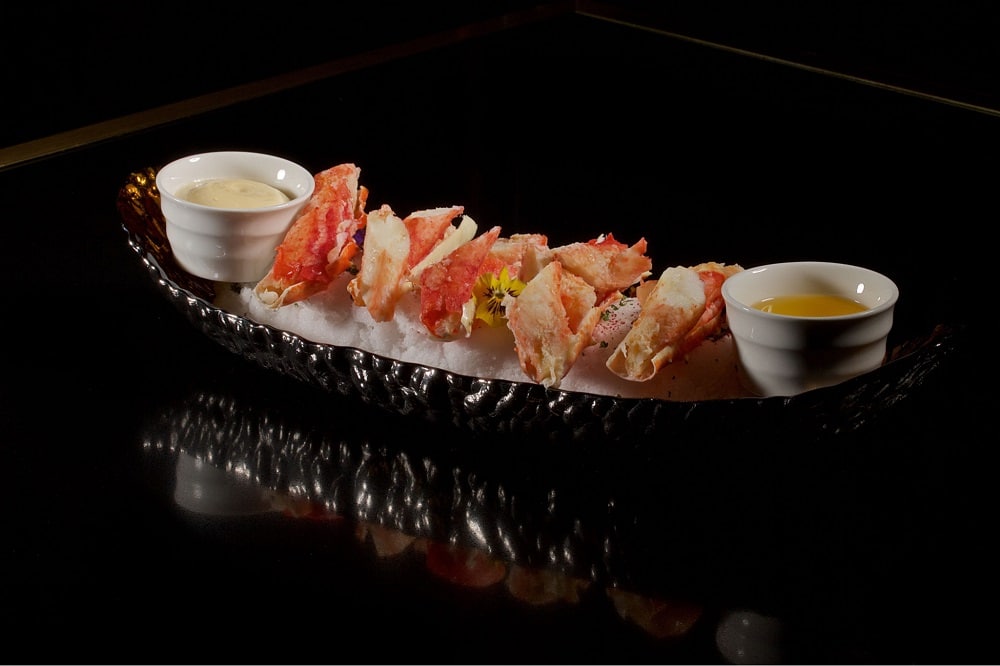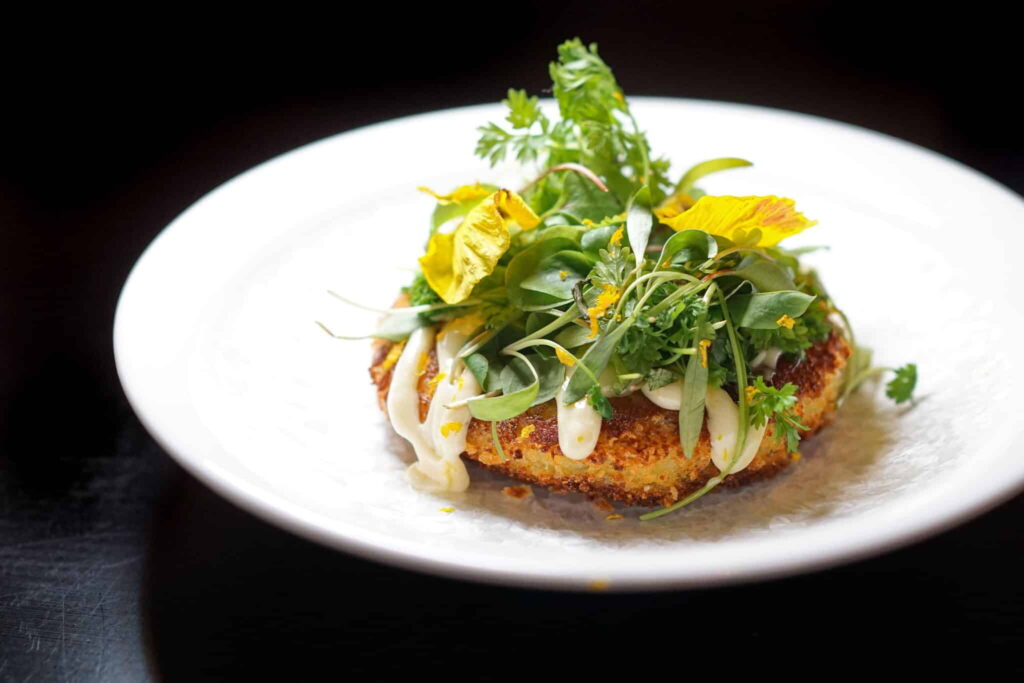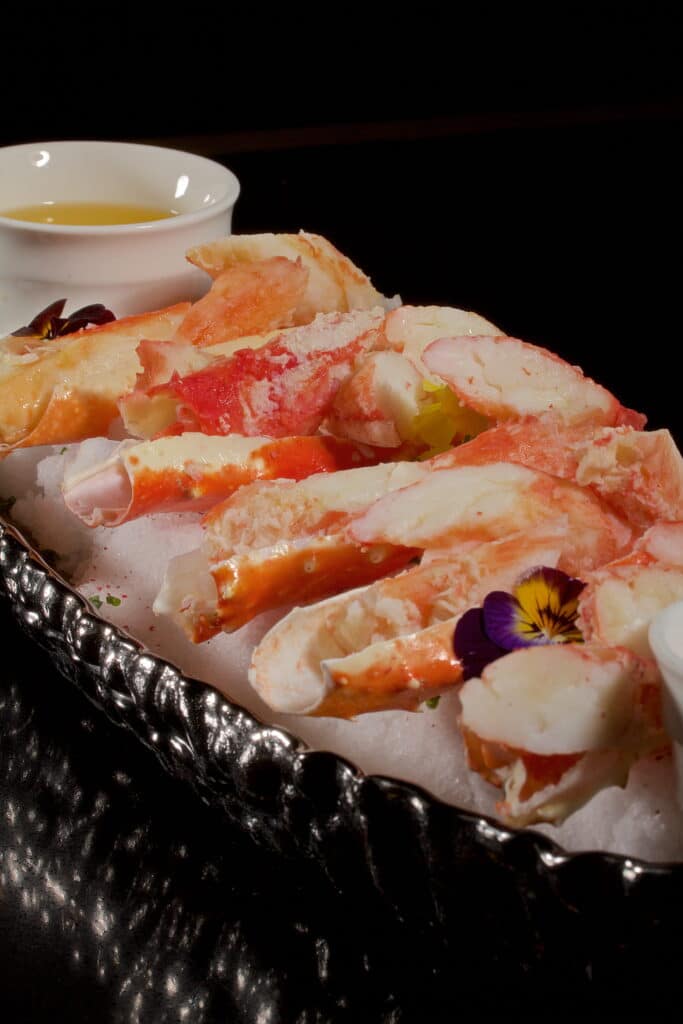Seafood 101:
The Different Types of Crab
If some of your favorite dishes feature fresh seafood, you’re probably a lover of crab. Crab is an incredibly popular type of seafood that many people of different cultures enjoy around the world. However, some might not know that there are several crabs, each offering a unique flavor and texture that seafood fans can appreciate.
As one of the top seafood restaurants in Las Vegas, we know a thing or two about crabs. So whether you’re craving a juicy crab boil or want to sink your teeth into king crab legs, the team at Aqua Seafood & Caviar Restaurant explains the different crab types, which ones are edible, and the best ways to eat them.
For the best fresh seafood in Las Vegas, check out Aqua Seafood & Caviar Restaurant on the Vegas Strip! Make a reservation online now.
1. Dungeness Crab
One of the most popular crabs to eat is the Dungeness crab. Known for their sweet and savory flavors and soft, flaky texture, Dungeness crabs are generally found around the shores of Alaska and other northern states in the spring and fall seasons. However, you may also find this crab species much further south.
Some ways to eat this type of crab include:
- Boiled and cracked
- Roasted
- Battered and deep-fried
- In a pasta dish
- In a soup or chowder
2. King Crab
King crabs are known for their delicious legs and claws, which are packed with juicy crab meat that’s often the highlight of the meal. While there are different crab species within the king crab category, the most sought-after types include the golden king crabs, red king crabs, and blue king crabs found around Alaska.
How do people eat king crab? When it comes to fresh fish and seafood, simple preparation and recipes are generally the best. Alaskan king crab legs have a firm texture and subtle flavor that goes particularly well with melted butter and lemon.
3. Blue Crab
If you’ve ever had crab cakes, chances are they were made using blue crabs from Maryland. Typically found along the east coast of the United States in the Chesapeake Bay, blue crabs are a smaller species with a delicate flavor that can be incredibly versatile. You may also know blue crabs as soft-shell crabs. This is because they go through a molting process that softens their shells, making the entire crab edible (including the shell!).
Blue crabs are best for:
- Crab cakes
- Crab soup
- Crab Louie sandwiches
- Crab salads
4. Brown Crab
Named for its distinguishable reddish-brown color, the edible brown crab is the predominant species you’ll see throughout western Europe. Its natural environment includes Norwegian waters in the North Sea and the northern Atlantic Ocean. As explained by All Things Nature, brown crab’s claws contain white meat, while the body has brown crab meat, which is considered to be a delicacy by many.
5. Snow Crab
Many people assume that snow crabs got their name because they live in the frigid waters of the northern Pacific and Atlantic Oceans, including the Bering Sea. However, “snow” actually refers to the impeccably white meat found within the crab’s legs and claws after it’s cooked.
If you’re new to crab or seafood in general and are unsure where to start, snow crab meat is mild in taste and texture with sweet notes that go well with many different sides or garnishes. The meat is also comparatively easy to eat after cracking the joints and sliding it out from the shell.


6. Florida Stone Crab
Unlike many of the more well-known species of crabs, Florida stone crabs are found in the warmer waters of the Gulf Coast. However, stone crab claws are often an expensive delicacy because of dwindling numbers and strict harvesting regulations and practices.
Stone crabs are also more difficult to eat because their claws are so hard. The process often involves a crab mallet or crab cracker and fork to remove the densely-packed, briny meat that is often compared to lobster.
7. Japanese Spider Crab
According to the Smithsonian Institute, the Japanese Spider Crab is the largest of all known crabs, with an average leg span of 13 feet and a weight of about 40 lbs! They are mainly found in the Pacific Ocean from Japan to Taiwan but may potentially be an endangered species due to a decline in numbers. This limits harvesting times to anything outside of their mating season.
Seeing a live Japanese spider crab can be rather alarming due to its size and remarkably long legs. However, they are actually a more gentle species than their appearance suggests because they forage food from the ocean floor rather than hunting their prey.
The meat is also quite tasty, with a distinctly sweet flavor. Boiling them for about 15-20 minutes is enough to cook the tender meat that is usually served with butter and lemon or garlic and chili.
Looking for seafood in Las Vegas? Join us for dinner at Aqua Seafood & Caviar Restaurant for seafood and more on the Vegas Strip!
8. Rock Crab
Rock crabs have an incredibly hard shell that resembles the texture of ocean rocks on the seafloor. Because their exteriors are so thick and tough, the edible crab meat inside is not as much as you’ll find in other crab species — but the taste is something to savor. Rock crab legs and claws have a distinctive briny flavor that packs a real seafood punch.
If you’re feeling adventurous in the kitchen and want to prepare these tough crabs, just know that they will put up a fight. Their pinch is quick, strong, and painful, so do your best to handle them carefully.
9. Horsehair Crab
Horsehair crabs are known for their highly textured shells, including the legs and claws, that are covered with tiny hairs. Found in the Western Bering Sea and shallow waters of the Pacific Ocean all year long, they are a popular crab for Japanese cuisine. Offering firmer meat with a sweet taste, they are also smaller and relatively inexpensive compared to other crabs.
10. Green Shore Crab
The green shore crab, also known as the southern European crab, is a freshwater crustacean that has become more popular in recent years. The reason for the increase in demand is their sudden invasion of Canadian waters that are home to Dungeness crabs and other species. Harvesting of the green shore crabs helps balance the populations while also satisfying crab lovers looking for a tasty alternative.
11. Coconut Crab
The coconut crab is truly unique from other crabs because it exclusively lives on land and only returns to the water to lay eggs once a year. They are strong and aggressive, with pinchers that can easily crack open a coconut. As a vulnerable species that may soon become endangered, it’s unlikely that you’ll see any coconut crab dishes at seafood restaurants in Las Vegas or other major cities.
12. Peekytoe Crab
Another small crab species is the peekytoe crab, discovered by accident through lobster catching. However, they are now a chef favorite for their delicate meat and mild taste. Because they would not survive the process of transporting them to seafood markets, they are usually cooked immediately after being caught. This meat is often used for:
- Crab cakes
- Crab rolls
- Salads
- Soups
- Dips
However, locals who are able to get live peekytoe crab will also steam, grill, roast, or broil them.
13. Poisonous Crabs
Remember — not all crabs are edible! Some crustaceans contain lethal levels of toxins that could make you sick or worse, even when cooked. Many of these crabs are native to the Australian reefs and are part of the Xanthidae family, including:
- Mosaic crab
- Toxic reef crab or devil crab
- Shawl crab
Las Vegas Best Seafood Restaurants for Crab
After all that crab talk, we know you’ve got a craving for some crab. So, where can I get delicious crab legs near me? If you’re looking for the best seafood in Las Vegas, Aqua Seafood & Caviar Restaurant will not disappoint!
Our curated seafood menu includes crab, lobster, raw shellfish, fresh fish, and the best cocktail caviar Las Vegas style, served in a sophisticated and welcoming atmosphere. You can find us at Resorts World on The Strip on South Las Vegas Blvd in the Las Vegas, NV 89109 zipcode. Contact us to learn more about our seasonal menu.

Resources:
Coconut Crab. (2022).
Creature Feature – Toxic Crabs. (2012).
Invasive green crabs are threatening local species. The solution? Eat them. (2022).
Japanese Spider Crab. (2022).
Stone Crab. (2021-2022).
What Is the Brown Crab? (2022).
